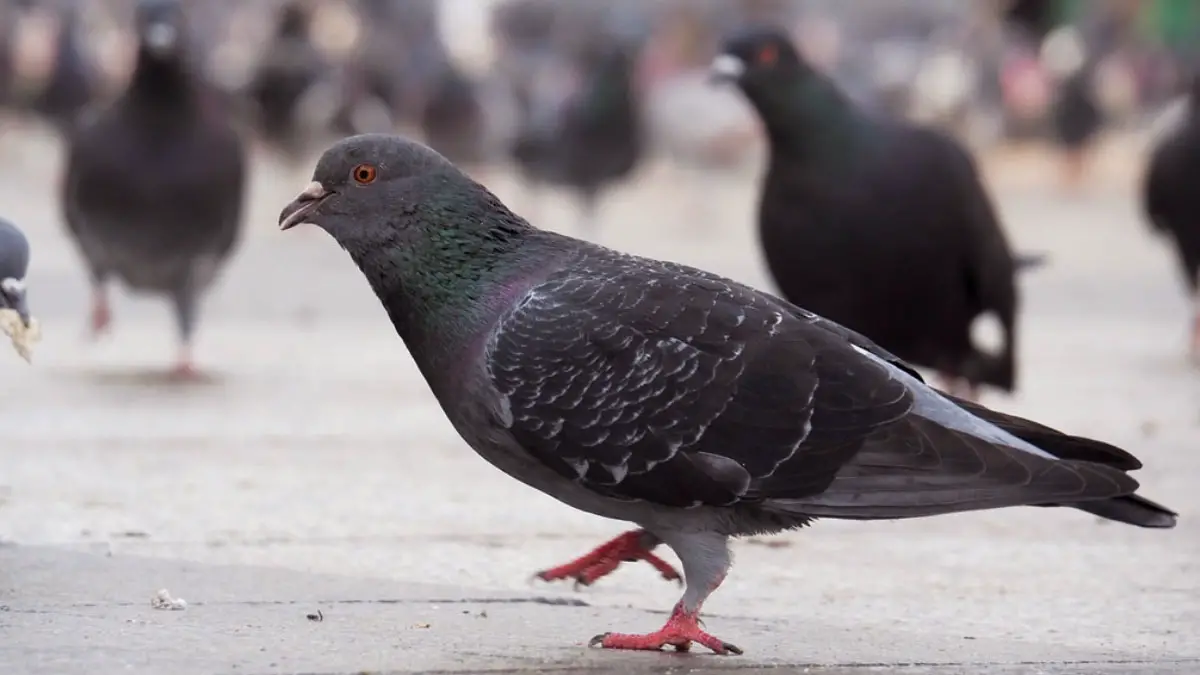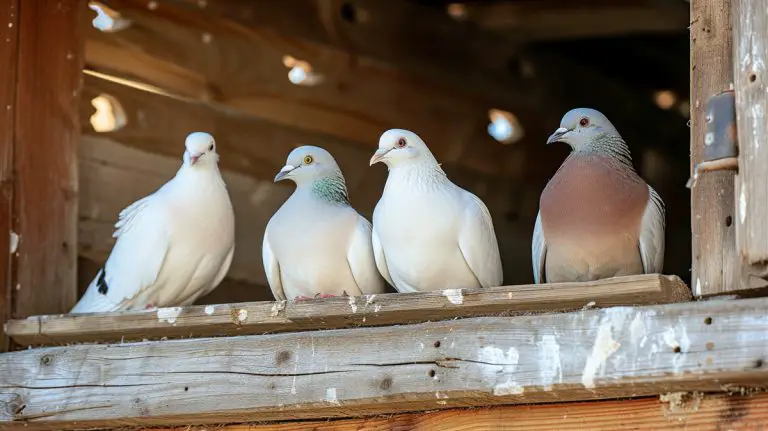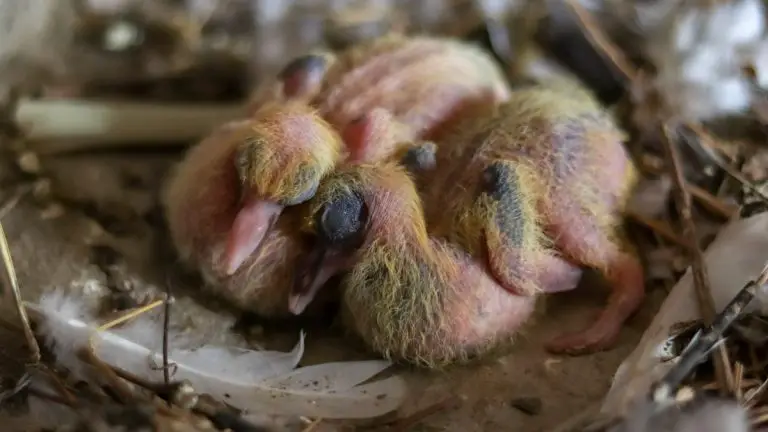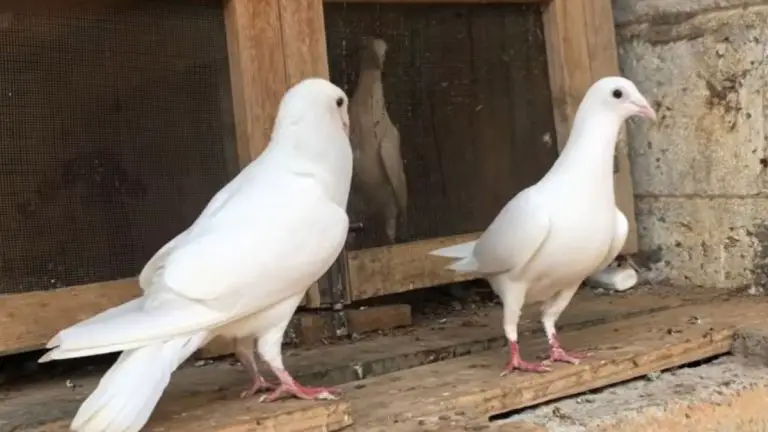City Pigeons: How They Adapt To Life In Urban Environments
Though pigeons can live in urban and rural areas, pigeons migration toward cities is increasing daily. A number of facts play a role in attracting pigeons to the adaptation to city life. They include the availability of food and nesting sites, the lack of natural predators, and the capacity of these birds to adapt to various surroundings.
Pigeons have advantages in cities despite some people’s perceptions that they are a nuisance or even a health risk. For instance, anybody, especially kids, who enjoy watching pigeons aviate and feed, can be entertained by them. By assisting in the management of insect populations, they also contribute to the preservation of urban ecosystems.
They have negatives as well. Due to their droppings, which can spread diseases and harm structures and public areas, they can provide filthy circumstances. Pigeons can drive native bird species out of their natural habitats and compete with them for resources.
In this article, we will discuss the pigeon’s adaptions to urban environments, behavior in urban environments, controlling pigeon populations in cities, and more. Read till the end of this article to learn more about it.
Adaptations To Urban Environments

Throughout time, pigeons have adapted many behaviors in urban cities that help them to survive there. Their adaptations have developed with the following aspects.
Physical And Behavioral Adaptations Of Pigeons to Urban Environment
The physical adaptions of such that they can fly with great speed and to a great distance. Pigeons find city infrastructure comfortable. This is one of the reasons why pigeons migrate from wildlife to urban areas.

Interestingly, pigeons have developed many behavioral adaptations that help them survive in cities. Such pigeon behavior includes their ability to roost and nest on man-made structures.
- Pigeon’s food habits are quite different from rural ones, as the urban ones depend on human leftovers for survival.
- They also make rooftop nests that give them the same vibe of the wild.
- As the predation rate is lower in urban areas, pigeons usually initiate shorter flight distances than in rural areas.
- The change in light-dark patterns in cities also affects their food supply. This impacts the diet of city pigeons.
- Pigeon’s tolerance of human disturbance is greater in urban areas.
- Also, pigeons have excellent navigation skills, which help them quickly look for food.
Diet Of City Pigeons And Their Sources Of Food In Urban Areas
City pigeons eat fruits, insects, and vegetables in urban areas. Human leftovers are also a great source of food for pigeons; thus, they don’t have any lack of food.
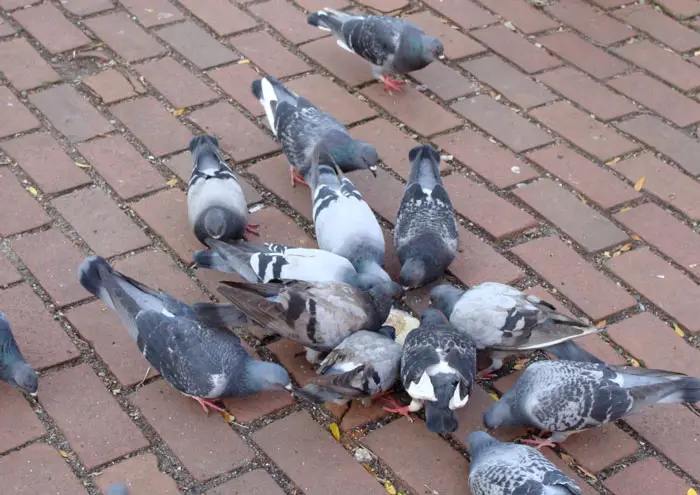
They can happily spend their days on these foods. Furthermore, they can find human leftovers in the trash or dustbins by scavenging.
The Challenges City Pigeons Face
Apart from the pigeons’ comfortable life in cities, they face some challenges in city landscapes.
- Urban areas are highly polluted. Environmental pollution badly harms pigeons’ health.
- The pigeons are very sensitive to air pollution because of their higher metabolic rates. Most of the time, they are exposed to the air; the pollution gets inside their respiratory system. It causes them to have respiratory problems. Air pollution decreases their navigation skills, too.
- Metals and particles get contaminated with air and make the air polluted. These problems can cause the pigeons to have eye, lung, and liver problems.
- The interference with navigation skills can reduce their flying skill
Therefore, staying in an urban area has advantages and disadvantages for pigeons.
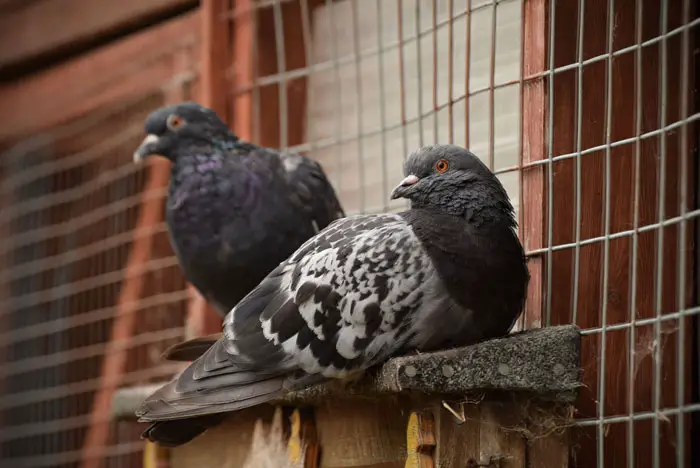
The Challenge Of Exposure To Predators
The pigeons have significantly few predators in the urban city. But they encounter predators from time to time. In cities, humans, dogs, cats, and hawks are the potential predators of pigeons. Their rates of predation by humans are more significant in urban areas than in wildlife.
However, when they face predators, the pigeons protect each other by staying in flocks. They may also use their flight abilities to escape from the predators.
Behavior In Urban Environments
The pigeons have adapted numerous behavior in urban environments. Their behavioral adaptions help them to survive in cities and escape from predators.
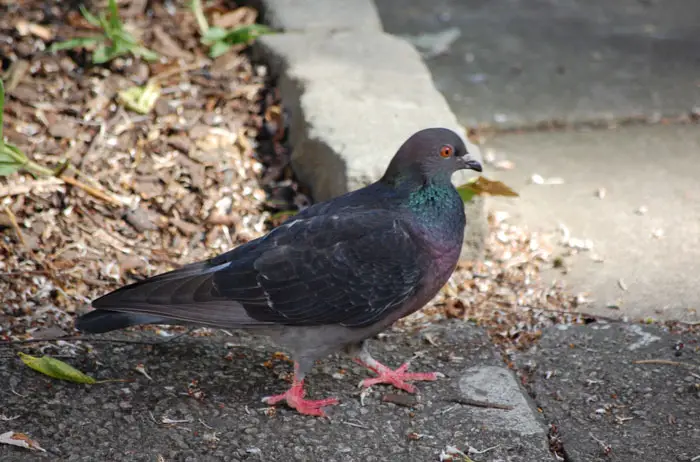
Concerning this matter, this section will describe the birds behavior in more detail.
Flocking Behavior Of City Pigeons
Usually, this pigeon behavior indicates the pigeons flying in the sky in flocks. They do flocking in the presence of predators. As it is hard for the predators to choose one prey from the flock, this behavior helps them to escape from them.
Additionally, the pigeons work as a team. Research shows that being in flocks helps the pigeons watch over the predators. So, the other pigeons can do other activities during that period.
They can protect themselves from predators and do activities such as eating food, mating, etc.
Mating Habits Of City Pigeons And Their Adaption
The pigeons breed almost the whole year. In wildlife, they have a lot of predators. There is also a poor facility of food for the wildlife. So they have to spend time looking for food. But, their natural nesting helps them breed with ease in the wildlife.
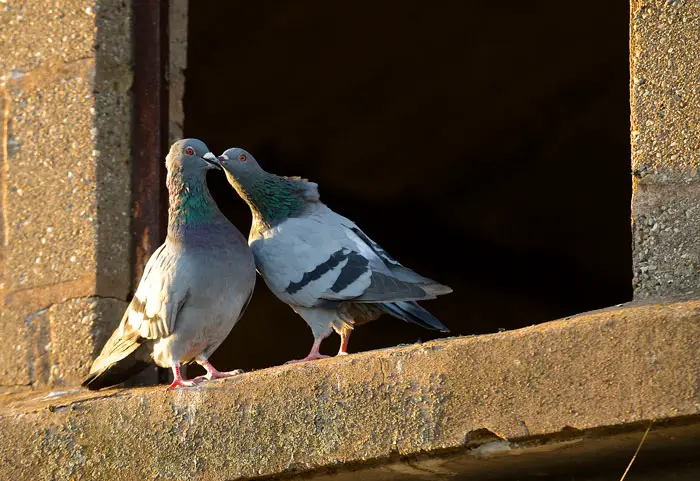
However, pigeons adapt their breeding habit in urban areas efficiently. Here they get proper nutrition and easily can breed and reproduce with the lack of natural nesting and human presence.
They can be freer as they don’t look for food. So, urbanization and their staying in urban areas also give them the benefit of breeding and reproduction. As a result, you can notice their reproduction rate in urban areas is higher than in the wild.
Impact Of Pigeon Presence On Other Urban Wildlife
We know that pigeons can carry a lot of diseases with them. Also, these diseases can be harmful to other pigeon species.
Pigeon diseases can deadly affect biodiversity. According to many reports, pigeons transmitted the infection to the chicken named paramyxovirus earlier. These infections put the other avian species’ life at risk.
They would also be affected by food or water through contact. Sometimes, even a contaminated environment can be a reason for the infection of other species.
The bird ecology of these pigeons may not be the best. But they are still essential to our society, and we should care for them.
Controlling Pigeon Populations In Cities
Though pigeons are essential for a balanced ecosystem, excessive increases in their number can disturb urban life. So, it’s become necessary to take the initiatives to control their population. Have a look at how you can control pigeon population growth in the cities below.

Methods Used To Manage City Pigeon Population
Pest control companies use several methods to control the city pigeon population. The methods are –
- Lethal method
- Non-lethal method
- Contraceptive method
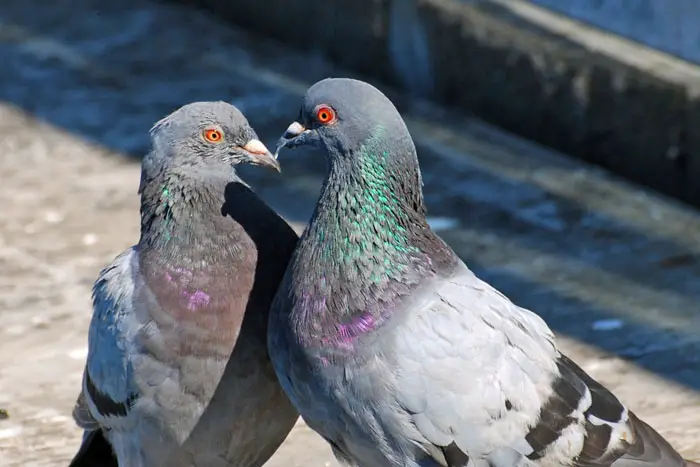
Lethal Method
This method can reduce the population of city pigeons by causing their death. But, we recommend urban planners avoid the lethal method as it is pretty brutal to do these with pigeons. Here is an idea of how this method works:
- You can mix poisons with grains to feed them to pigeons. But there is always the risk of killing the wrong birds.
- Shooting them can also be a suitable controlling method. But in some countries, it’s illegal to use firearms on pigeons in urban areas. You may need an authorized license for that.
- For trapping, you can lure the pigeons into the trap with grains. The door should be of one-way design so they can’t escape after entering the trap. Later, you need to euthanize them.
Non-lethal Method
Unlike the lethal method, this method does not imply brutal techniques to chase away the pigeons or to control the pigeon population. This method includes:
- Frightening the birds with loud noises or revolving lights.
- Using spikes on different building surfaces can deter the birds from nesting on buildings.
- Destroying the nest of the pigeons from building roofs, vents, windowsills, etc.
- Eliminating or covering the feeding sources of your pet birds from open places.
Contraceptive Method
The pigeons are given contraceptives in the food. Through this, the ability to fertilization of pigeons decreases.
The Ethical Considerations of the Methods And Their Effectiveness
There are a few methods taken by environmental organizations that can control the pigeon population. But some practices are inhumane, and we should not follow those methods to reduce the pigeon population.
There are more ways by which we can successfully decrease the risks of pigeon presence in cities. However, the effectiveness of these methods varies.
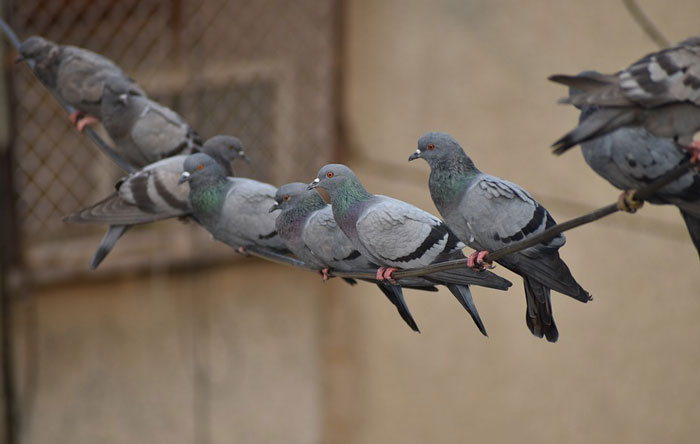
For example, lethal methods are not so effective. This method can fail to decrease the population as pigeons breed fast. Killing them won’t work, as they already will have their off-springs. So, you may choose other methods, such as birth control and using devices to scare them away.
The devices can be the sound of fake predators through the devices. So you can place these devices where you don’t want the pigeons to come. This method is also effective in chasing away the pigeon flocks.
Alternative Approaches To Managing City Pigeon Populations
There are some alternative approaches you may take to manage pigeon populations. You may encourage the birds by removing their roosting sources.
Moreover, you can make them switch their nesting place by using bird slides or installing wires.
If you’re interested in learning more about the immune system of pigeons and the digestive system of pigeons, you may find our articles on pigeons’ immune system and pigeons’ digestive system helpful. Our article on pigeons’ immune system delves into the fascinating mechanisms that contribute to the resilience and disease resistance of pigeons, providing insights into their unique immune responses. Meanwhile, our article on pigeons’ digestive system explores the intricacies of their digestive tract, discussing the specialized adaptations that enable them to efficiently process their diet and extract nutrients. These articles offer valuable information on both the immune defense mechanisms and the digestive physiology of city pigeons.Conclusion
Pigeon habitat in cities is developing day by day. These pigeons find it comfortable to stay in the towns as it gives them more benefits. We already discussed city pigeons and how they adapt to life in urban environments. They can eat humans and also make nests in man-made structures.
But, pigeons can be harmful to humans as they carry diseases. You may take ethical steps instead of lethal ones to manage the city pigeon population. However, you can learn more about the various pigeon habitats and urban wildlife management by researching more.
